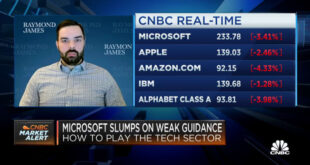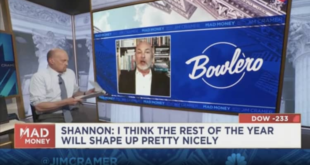 DANIEL SORABJI | AFP | Getty Images
DANIEL SORABJI | AFP | Getty Images
A newspaper stand shows a copy of today’s Evening Standard, with the front page story relating to British Prime Minister Theresa May’s call for a snap general election on June 8, in central London on April 18, 2017.
While this election initially expected to see the Conservatives win outright, latest polls indicate this majority is becoming less predictable, therefore last-minute events could have some influence in swaying undecided voters.
One sector that has a degree of influence in politics is that of the media. In previous elections, it’s not uncommon for some national newspapers to endorse a party or to hold a particular view. However, in the age of social media and “on the move” mobile news – how influential are newspapers when it comes to political party endorsements?
“Circulation of print papers has declined in most of Western industrialized countries, but I wouldn’t infer from that a decline in influence,” said Dr. Marco Bastos, lecturer in media and communications at City, University of London, in an email to CNBC.
Bastos gave two reasons for this: one, not all sectors of the news industry have been equally impacted by the drop in print ad revenues, and second, that newspapers’ influence is a result of their “structural coupling to the public opinion, a process that surely benefits from broad circulation but that’s not restricted to it.”
Digital, meanwhile, has greatly advanced in the past decade but at 2015’s U.K. election, it appeared online technology had yet to show its full wrath of influence.
According to a 2015 survey of 3,019 people by Panelbase, 62 percent saw TV as being the most influential in informing people about the election, compared to the 17 percent for websites, and 7 percent or less for Facebook, Twitter and other social media platforms. Meanwhile, newspapers had 24 percent influence in informing readers about the election and helping them form opinions on parties, with The Daily Mail being the most influential of those listed, followed by The Guardian and The Times.
“It is true that Conservative voters tend to buy the Mail and the Telegraph, and the Mirror’s voters are overwhelmingly Labour party supporters. However, the agenda setting impact of the news media is significant; they may not directly influence your vote, but they certainly set the agenda about what’s being talked about,” said Tom Felle, lecturer in journalism at City, University of London, to CNBC via email.
 EU News Digest Latest News & Updates
EU News Digest Latest News & Updates



